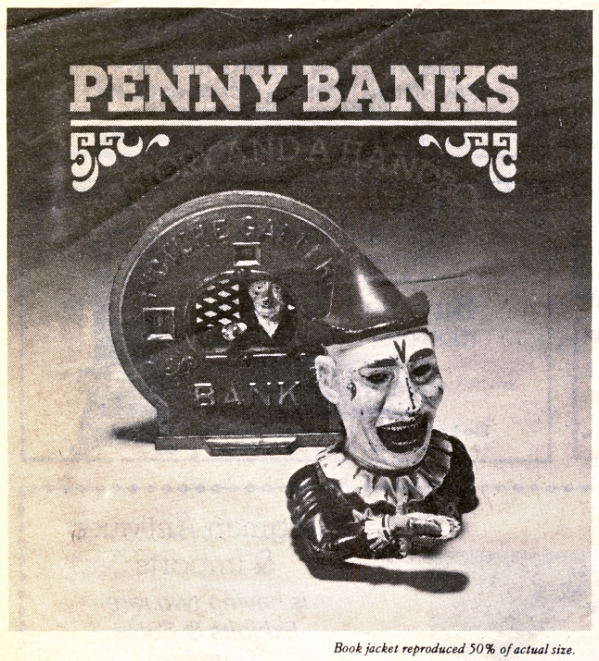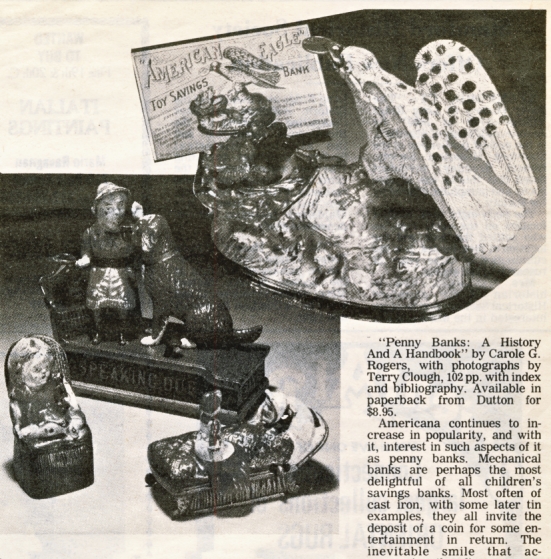|
"Penny Banks: A History And
A Handbook"
by Carole a. Rogers, with photographs by Terry Clough, 102 pp. with
index and bibliography. Available in paperback from Dutton for $8.95.
Americana continues to increase in popularity, and with it,
interest in such aspects of it as penny banks. Mechanical banks are
perhaps the most delightful of all children's savings banks. Most often
of cast Iron, with some later tin examples, they all invite the deposit
of a coin for some entertainment in return. The inevitable smile that
accompanies the disappearance of the coin into a mechanical hank as well
as the general interest in Americana has produced a growing field of
collectors of old penny banks. "Penny Banks: A History and a Handbook"
does an excellent job of detailing the history of mechanical banks. The
author, a writer and collector herself, has researched the history of
these banks back to the 'Han Dynasty in China. She briefly sketches the
history of banks up to Colonial America, and notes the American
qualities of inventiveness and thrift as basic to the Nineteenth Century
development of mechanicals.
After a brief discussion of various early American pottery, glass
and tin banks, the author devotes the larger part of the book to
mechanicals. These were first made after the Civil War. Various
companies that produced the banks and individuals who designed them are
discussed with clarity. The procedure of patenting both design and
interior workings and the production procedure is carefully explained.
This book covers the variety to be found in mechanicals. Political
and historical events and personages (Tammany, Uncle Sam ) fain' tales
(Little Red Riding Hood): animals (Eagle and Eaglets): sporting events)
Darktown Battery); the circus (Circus, Trick Pony); military battles
(U.S. and Spain): social forces (Bread Winner) are some of the
catagories to which the banks directed their subject matter. The
prejudices of the country are graphically portrayed in such banks as
Paddy and the Pig (anti Irish). the Reclining Chinaman (anti Oriental),
and a variety of banks depicting Blacks (Dentist, Always Did Spise A
Mule).
Collecting mechanical banks is a tricky business for the novice,
and Rogers' book can serve as a useful guide. She explains the
evaluation system most collectors use, notes the variety of banks to be
found, and issues a warning on recasts and fakes. She also makes some
interesting suggestions as to how to limit a collection of mechanicals
to a specialized theme. A chapter on modern mechanicals brings the book
to the present and gives an appropriately broad view of the mechanical
collecting field.
The section on still cast iron banks although smaller than that on
mechanicals is comprehensive and offers much useful information.
The book contains 74 illustrations and 20 color plates. They should
serve as an excellent source for collectors to familiarize themselves
with the details that frequently distinguish originals from fakes.
—Heidi Berry |

|



